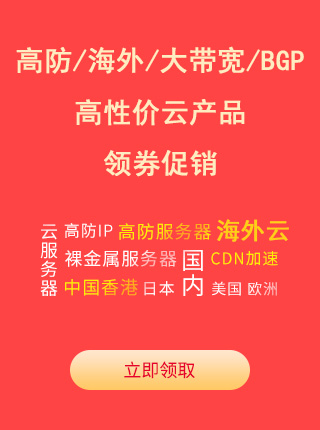Python中常见的对字符串操作有哪些,具体怎么做
Admin 2022-07-05 群英技术资讯 810 次浏览
 这篇文章主要介绍“Python中常见的对字符串操作有哪些,具体怎么做”,有一些人在Python中常见的对字符串操作有哪些,具体怎么做的问题上存在疑惑,接下来小编就给大家来介绍一下相关的内容,希望对大家解答有帮助,有这个方面学习需要的朋友就继续往下看吧。
这篇文章主要介绍“Python中常见的对字符串操作有哪些,具体怎么做”,有一些人在Python中常见的对字符串操作有哪些,具体怎么做的问题上存在疑惑,接下来小编就给大家来介绍一下相关的内容,希望对大家解答有帮助,有这个方面学习需要的朋友就继续往下看吧。字符串是 Python 中最常用的数据类型,同时支持单引号和双引号。使用双引号时打印字符串时用单引号。
>>> "Hello world!" 'Hello world!' >>> 'Hello world!' 'Hello world!' >>> "Let's go!" "Let's go!" >>> 'she said "Hello world!" ' 'she said "Hello, world!" '
引号转义
上述示例可使用反斜杠(\)对引号进行转义。
>>> 'Let\'s go!' "Let's go!" >>> "\"Hello, world!\" she said" '"Hello, world!" she said'
拼接字符串
通常使用 +号拼接字符串,像数字相加一样。
>>> "she said " + '"Hello world!"' 'she said "Hello world!"' >>> a = "she said " >>> b = '"Hello world!"' >>> a + b 'she said "Hello world!"'
依次输入两个字符串时,也可实现字符串拼接。
>>> "she said " '"Hello world!"'
'she said "Hello world!"'
# 只有输入的是字符串才有用
>>> a = "she said "
>>> b = '"Hello world!"'
>>> a b
File "<stdin>", line 1
a b
^
SyntaxError: invalid syntax
长字符串
可使用三引号表示很长的字符串(跨越多行的字符串)。
>>> """like this"""
'like this'
>>> print('''long long ago!
"Hello world!"
she said.''')
long long ago!
"Hello world!"
she said.
常规字符串也可横跨多行。只要在行尾加上反斜杠,反斜杠和换行符将被转义,即被忽略。
>>> 1 + 2 + \
4 + 5
12
>>> print("Hello \
world!")
Hello world!
>>> print \
('Hello world')
Hello world
索引( indexing)
对于字符串字面量,可直接对其执行索引操作,无需先将其赋给变量。
>>> 'Hello'[1] 'e'
如果函数调用返回一个序列,可直接对其执行索引操作。
>>> yearnum = input('please input year: ')[3]
please input year: 2021
>>> yearnum
'1'
将序列与数字n相乘时,将重复这个序列n次来创建一个新序列。
>>> 'python' * 3 'pythonpythonpython'
运算符in
要检查特定的值是否包含在序列中,可使用运算符in
>>> access_mode = 'rw+' >>> 'w' in access_mode True >>> 'x' in access_mode False >>> subject = '$$$ Get rich now!!! $$$' >>> '$$$' in subject True
创建列表
使用函数list ,可以快速将字符串转换成一个字符列表。
>>> somelist = list('Hello')
>>> somelist
['H', 'e', 'l', 'l', 'o']
将字符列表转换为字符串。
>>>''.join(somelist)
切片赋值
>>> name = list('Perl')
>>> name
['P', 'e', 'r', 'l']
>>> name[2:] = list('ar')
>>> name
['P', 'e', 'a', 'r']
>>> name = list('Perl')
>>> name[1:] = list('ython')
>>> name
['P', 'y', 't', 'h', 'o', 'n']
0x02 字符串格式化
格式字符串中的%s称为转换说明符,指出了要将值插入什么地方 并在右边指定要设置其格式的值。指定要设置其格式的值时,可使用单个值(如字符串或数字),可使用元组(如果要设置多个值的格式),还可使用字典,其中最常见的是元组。
>>> format = "Hello, %s. %s !"
>>> values = ('world', 'python')
>>> format % values
'Hello, world. python !'
模板字符串
包含等号的参数称为关键字参数,
>>> from string import Template
>>> tmpl = Template("Hello, $param1! $param2 !")
>>> tmpl.substitute(param1="world", param2="Python")
'Hello, world! Python !'
字符串方法format
>>> "{}, {} and {}".format("first", "second", "third")
'first, second and third'
>>> "{0}, {1} and {2}".format("first", "second", "third")
'first, second and third'
>>> "{3} {0} {2} {1} {3} {0}".format("be", "not", "or", "to")
'to be or not to be'
>>> from math import pi
>>> "{name} 约等于 {value:.2f}.".format(value=pi, name="π")
'π 约等于 3.14.''
如果变量与替换字段同名,还可使用一种简写。在这种情况下,使用f字符串――在字符串前面加上f。(Python 3.6+)
>>> from math import e
>>> f"Euler's constant is roughly {e}." # 等价于 "Euler's constant is roughly {e}.".format(e=e)
"Euler's constant is roughly 2.718281828459045."
0x03 如何设置格式
字符串包含有关如何设置格式的信息, 而这些信息是使用一种微型格式指定语言 (mini-language)指定的。每个值都被插入字符串中,以替换用花括号括起的替换字段。 替换字段由如下部分组成,其中每个部分 都是可选的。
- 字段名:索引或标识符,指出要设置哪个值的格式并使用结果来替换该字段。除指定值 外,还可指定值的特定部分,如列表的元素。
- 转换标志:跟在叹号后面的单个字符。当前支持的字符包括r(表示repr)、s(表示str) 和a(表示ascii)。如果你指定了转换标志,将不使用对象本身的格式设置机制,而是使 用指定的函数将对象转换为字符串,再做进一步的格式设置。
- 格式说明符:跟在冒号后面的表达式(这种表达式是使用微型格式指定语言表示的)。格 式说明符让我们能够详细地指定最终的格式,包括格式类型(如字符串、浮点数或十六 进制数),字段宽度和数的精度,如何显示符号和千位分隔符,以及各种对齐和填充方式。
字段名
只需向format提供要设置其格式的未命名参数,并在格式字符串中使用 未命名字段。此时,将按顺序将字段和参数配对。你还可给参数指定名称,这种参数将被用于相 应的替换字段中。你可混合使用这两种方法。
>>> "{foo} {} {bar} {}".format(1, 2, bar=4, foo=3)
'3 1 4 2'
还可通过索引来指定要在哪个字段中使用相应的未命名参数,这样可不按顺序使用未命名 参数。
>>> "{foo} {1} {bar} {0}".format(1, 2, bar=4, foo=3)
'3 2 4 1'
并非只能使用提供的值本身,而是可访问其组成部分,可使用索引,还可使用句点表示法来访问导入的模块中的方法、属性、变量和函 数
>>> fullname = ["Alfred", "Smoketoomuch"]
>>> "Mr {name[1]}".format(name=fullname)
'Mr Smoketoomuch'
>>> import math
>>> tmpl = "The {mod.__name__} module defines the value {mod.pi} for π"
>>> tmpl.format(mod=math)
'The math module defines the value 3.141592653589793 for π'
转换标志
(s、r和a)指定分别使用str、repr和ascii进行转换。函数str通常创建外观 普通的字符串版本\。函数repr尝试创建给定值的Python表 示(这里是一个字符串字面量)。函数ascii创建只包含ASCII字符的表示。
>>> print("{pi!s} {pi!r} {pi!a}".format(pi="π"))
π 'π' '\u03c0'
格式说明
(即冒号后面)使用字符f(表示定 点数)。
>>> "The number is {num}".format(num=42)
'The number is 42'
>>> "The number is {num:f}".format(num=42)
'The number is 42.000000'
>>> "The number is {num:b}".format(num=42)
'The number is 101010'
0x04 字符串方法
常量
模块string中几个很有用的常量
- string.digits:包含数字0~9的字符串。
- string.ascii_letters:包含所有ASCII字母(大写和小写)的字符串。
- string.ascii_lowercase:包含所有小写ASCII字母的字符串。
- string.printable:包含所有可打印的ASCII字符的字符串。
- string.punctuation:包含所有ASCII标点字符的字符串。
- string.ascii_uppercase:包含所有大写ASCII字母的字符串。
填充方法
字符串填充字符方法
center、 ljust、 rjust、 zfill
split
如果没有指定分隔符,将默认在单个或多个连续的空白字符(空格、制表符、换行符 等)处进行拆分
>>> seq = ['1', '2', '3', '4', '5']
>>> sep = '+'
>>> sep.join('+') # 合并一个字符串列表
'1+2+3+4+5'
>>> '1+2+3+4+5'.split('+')
['1', '2', '3', '4', '5']
>>> 'Using the default'.split()
['Using', 'the', 'default']以上就是关于“Python中常见的对字符串操作有哪些,具体怎么做”的相关知识,感谢各位的阅读,想要掌握这篇文章的知识点还需要大家自己动手实践使用过才能领会,如果想了解更多相关内容的文章,欢迎关注群英网络,小编每天都会为大家更新不同的知识。

免责声明:本站发布的内容(图片、视频和文字)以原创、转载和分享为主,文章观点不代表本网站立场,如果涉及侵权请联系站长邮箱:mmqy2019@163.com进行举报,并提供相关证据,查实之后,将立刻删除涉嫌侵权内容。
猜你喜欢
-
python下os.stat()有哪些常用的操作用法?
这篇文章主要介绍了python os.stat()如何获取相关文件的系统状态信息,具有很好的参考价值,希望对大家有所帮助。如有错误或未考虑完全的地方,望不吝赐教
-
Pandas添加行列操作及代码是什么
在进行数据分析时经常需要按照一定条件创建新的数据列,然后进行进一步分析,下面这篇文章主要给大家介绍了关于Python Pandas多种添加行列数据方法的相关资料,需要的朋友可以参考下
-
matplotlib中设置显示中文的方式有多少种
这篇文章主要介绍了python设置 matplotlib 正确显示中文的四种方式,帮助大家更好的理解和学习使用python,感兴趣的朋友可以了解下
-
splinter如何进行安装,作用及用法是什么
Splinter是一个使用Python测试Web应用程序的开源工具,可以自动化浏览器操作,使用Splinter可以使用pyhton脚本来实现,具体安装及操作方法跟随小编一起看看吧
-
python pynacl是什么库,用法是怎样的呢
PyNaCI能够提供数字签名、密钥加密、公钥加密、哈希和消息身份验证、基于密码的密钥派生和密码散列功能,这篇文章主要介绍了python密码学库pynacl,感兴趣的朋友一起看看吧
成为群英会员,开启智能安全云计算之旅
立即注册关注或联系群英网络
7x24小时售前:400-678-4567
7x24小时售后:0668-2555666

24小时QQ客服

群英微信公众号
CNNIC域名投诉举报处理平台
服务电话:010-58813000
服务邮箱:service@cnnic.cn
投诉与建议:0668-2555555
Copyright © QY Network Company Ltd. All Rights Reserved. 2003-2020 群英 版权所有
增值电信经营许可证 : B1.B2-20140078 粤ICP备09006778号 域名注册商资质 粤 D3.1-20240008



